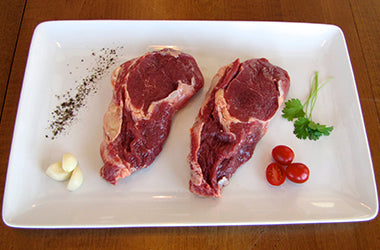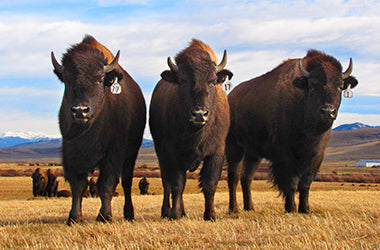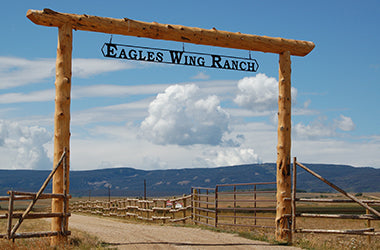- Continue Shopping
- Your Cart is Empty

Bison
Our family has a long-standing affection for and curiosity about Bison, dating back to Bob’s days as a third-generation Colorado dairy farmer. If you’re here, then chances are you’re as interested in them as we are!
Bison in the US

The American Plains Bison (or ‘buffalo’ as the French settlers referred to them) is an iconic symbol of the American West and an enduring symbol of strength, resiliency and beauty. Following European settlement and expansion, their numbers were reduced from 30 million to only a few hundred in a remarkably short amount of time.
Once prevalent in herds numbering tens or even hundreds of thousands and covering most of the US; the American Plains Bison, at its peak, numbered anywhere from 20-50 million animals. Following European settlement however, the Bison saw their numbers dramatically reduced in a relatively short amount of time. Massive consumer demand for hides, both in the US as well as Europe, spawned commercial operations which slaughtered tens of thousands of Bison per day. Coupled with recreational hunting by settlers, expansion of railroads and overhunting by both Settlers and certain Native American tribes, the American Plains Bison population was decimated; leaving only a few hundred animals in existence by the late 1800’s.
Luckily, a combination of individual efforts and good fortune saved the Bison from extinction. Certain ranchers, recognizing the need to preserve the remaining animals, started establishing new herds, while a population of 23 wild Bison in Yellowstone National Park which survived the mass slaughter began naturally rebuilding, remaining the only continuously wild bison herd in the US.
Private ranchers continue to rebuild the Bison presence in America, and Eagle’s Wing Ranch is proud to be part of this effort.
...
Environmental Benefits

The Bison is so perfectly adapted to its natural environment that it only needs access to ample food and water and room to roam in order to thrive, making it a sensible and sustainable source of animal protein.
A working Bison ranch is a picture of natural harmony and sustainability. The animals roam freely, eating the native grasses while aerating and fertilizing the land as they go. Every day on Eagle’s Wing Ranch captures the 'Classic Colorado' experience -- Bison roaming the fields, circling eagles hunting their prey, trout surfacing in the ponds, all under an impossibly blue sky surrounded by snowy mountain peaks.
Our mission is to provide our Bison the freedom to be part of this ecosystem in the way nature intended. By managing our herd in this way, we are part of rebuilding the Bison population in the US, and we can promise you that a happy Bison is a tasty Bison!
...
Health Benefits

Grass-fed bison is lean & healthy, packed with amazing amounts of natural nutritive benefits, including Omega 3 fatty acids and lower cholesterol than chicken or fish.
Bison, America's 'Original Red Meat', has been rapidly gaining in popularity over the last decade, and with good reason. Its flavor profile is similar to grass-fed beef; lean, flavorful and slightly sweet without the ‘gaminess’ associated with other big game animals. The nutrition and lifestyle of grass-fed Bison results in meat that is high in Omega 3 fatty acids, iron and vitamins, while being much lower in saturated fat and cholesterol than other animal proteins - even chicken and salmon! Read an article on the importance of Omega 3 to a healthy lifestyle.
Our grass fed and finished Bison are naturally raised, without the use of drugs, hormones or antibiotics. They spend their lives in our vast pastures, eating the legendary North Park hay and drinking pure mountain water flowing directly from Routt National Forest. We do not finish our Bison on grain, and find that our Bison meat is more juicy and tender than any we’ve ever tried. See if you agree!
See how Bison compares nutritionally with other meat (info courtesy of the National Bison Association):

...



